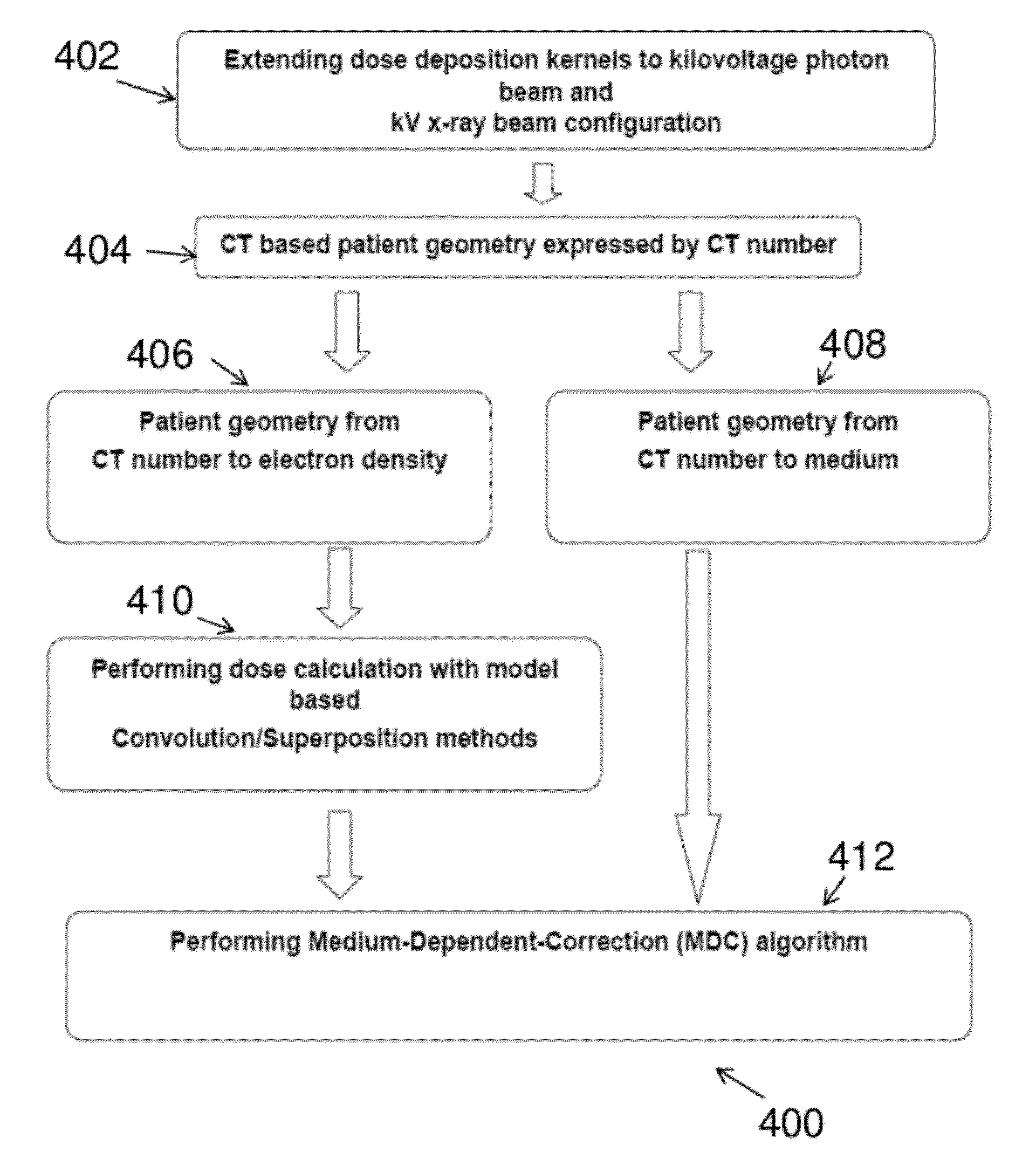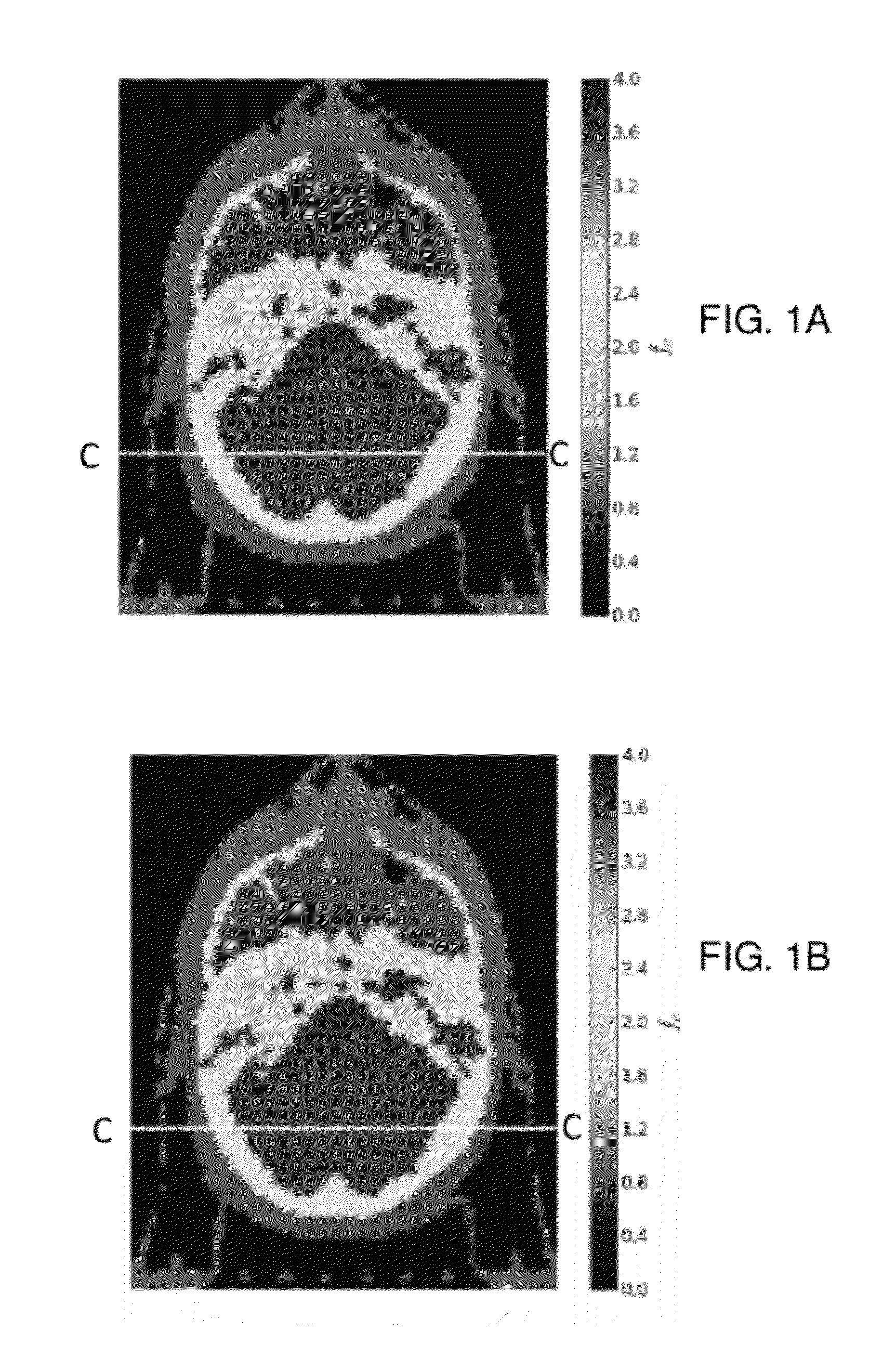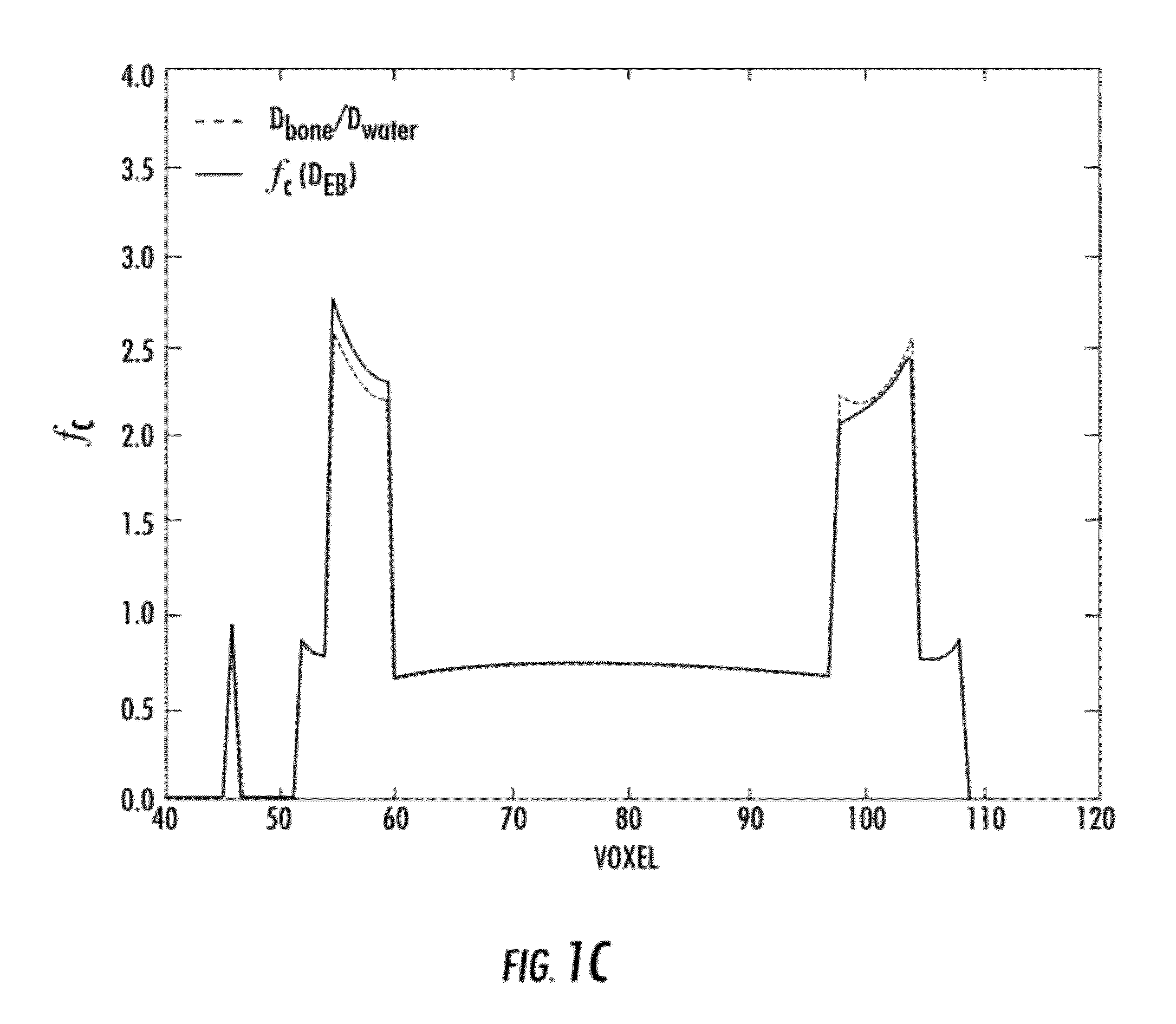Frequent and repeated
imaging procedures such as those performed in image-guided radiotherapy (IGRT) and diagnostic CT procedures may add significant
dose to patients.
Imaging procedures are necessary due to their potential benefits, but the additional radiation also entails risk to patients.
Currently available model-based
dose calculation methods are inaccurate and not suitable for low energy x-rays.
Although the Monte Carlo method is accurate; the long computational times have prevented it from practical use.
Furthermore, to the extent that the output distributions are an aggregate of the multitude of tested scenarios, current Monte Carlo
simulation tools provided only a limited opportunity to interact with, and therefore develop a true understanding of, the
simulation model.
An x-
ray image procedure entails risk to patients because it exposes the radiation to radiosensitive organs.
However, heretofore, there has not been a
dose calculation algorithm available that is fast and accurate for kV x-ray beams to meet the demand in clinical practice.
The Monte Carlo method is accurate but its calculation speed is too slow to meet the requirement.
Contrast between tissues in the body results from different rates of attenuation of x-rays within each tissue and is typically limited to differentiating between bone and soft-tissue, except in specialized applications such as
mammography.
Though useful in many situations, the
diagnostic information from conventional x-ray imaging is limited because the intensity of the transmitted x-rays at the
detector is a result of the integrated attenuation of the x-rays along the path from the x-ray source to the
detector.
Additional bone dose from repeated image guided procedures when added to the radiotherapy doses may further increase the risk of bone malformation and growth issues associated with pediatric
radiotherapy treatment protocols.
The increased
radiation exposure and the risk associated with it can no longer be ignored.
As discussed above, all currently available model-based
dose calculation algorithms that may be adequate in the dose calculation for
mega-
voltage photon beams are incapable of calculating radiation dose from kilo-
voltage x-rays leading to dose errors of up to 300% due to the increased
photoelectric effect in doses to bone.
An earlier attempt of applying heterogeneity-corrected
convolution dose calculations for kV x-rays was shown to be unsuccessful.
Although Monte Carlo techniques are capable of calculating
patient dose resulting from x-rays, the long computation times (days) are prohibitive for practical clinical use.
The issues with Monte Carlo calculations include the very long computational times (many hours) required that limit “real time” calculations for clinical practice.
This process converts each
voxel in the patient
DICOM image from CT number to a specific material and density, which is not currently available in model-based commercial treatment planning systems.
We performed similar calculations with 4, 8, 32, 64, and 360 incident rays and found that calculations using less than 16 rays resulted in effective bone depth distributions that inadequately characterized the distribution of bone in the patient, and calculations using more than 16 incident rays did not show significant improvement to justify the additional calculation time.
The results of the model-based calculation (FIG. 9C) show that the currently available method is unable to calculate imaging dose from kV x-rays, most prevalently for bone
anatomy.
This is in contrast to the model-based calculation, which resulted in significantly higher errors of up to −103% for bone, and 8% for soft-tissue.
Similarly for the
femoral head (FIG. 10C) the model-based correction is incapable of accurately calculating these doses.
Simple application of a constant multiplicative correction factor would incorrectly predict the shape of the Monte Carlo distribution; however, the MDC-EA accurately models the dose-to-medium.
The density-corrected-only calculations result in mean bone dose errors up to −103%, with standard deviations of the distributions approaching nearly 40%.
The density-corrected-only calculation results in significant underestimation of bone dose and overestimates the soft-tissue structure dose.
 Login to View More
Login to View More  Login to View More
Login to View More 


